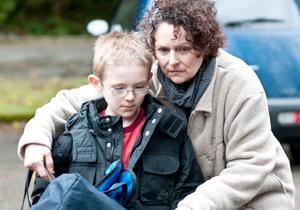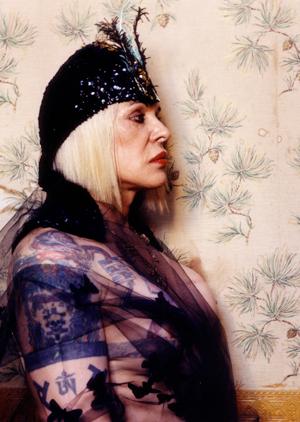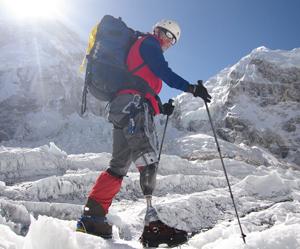
Everything & Everyone.

The Ballad of Genesis and Lady Jaye.

40 Days at Base Camp.
Though Vancouver’s Queer Film Festival is clearly home base for most of this community’s film buffs, the city’s International Film Fest (VIFF) has continued to expand the depth and breadth of its queer selections as well.
“We’re thrilled to showcase more than 30 feature films and short films with queer interest or content from all over the world,” says programmer Mark Peranson, noting this will be one of the gayest years in VIFF’s 30-year run.
He is particularly excited about Pedro Almodóvar’s opening gala, The Skin I Live In (La piel que habito); a film called Without about cyberbullying in a lesbian context; and the trans film Señorita, in the Dragons and Tigers competition, which grew out of a short film by director Vincent Sandoval that screened last year.
“There’s a lesbian film set in Iran called Circumstance,” Peranson continues, “which explores the issues in a way not seen before in Iranian cinema. In fact, the subject matter is so daring for Iran that they could not even shoot the film there; it was shot in Beirut. It screened at Sundance, where it won the audience award for international cinema, and one of the lead actresses is actually based in Vancouver and will be at the screening.”
While not all the films’ screeners were available by deadline, here is a glance at some of the other queer content at this year’s VIFF.
***
Wish Me Away
Chely Wright was a chart-topper in the country music scene, a God/military/U!S!A! enthusiast. But even as she was adored by thousands, she struggled with decades of self-hate, knowing she was gay but wishing that she wasn’t.
Wish Me Away — which serves as a great accompaniment to her 2010 coming-out book, Like Me: Confessions of a Heartland Country Singer — shows Wright at her most raw. “I’m just trying to live my life openly and honestly,” she says, “because living it not openly and honestly about killed me.”
From 5am video diary entries rife with coming-out fears to debates with her sister on how best to navigate family members expected to object to her disclosure, the film offers a candid look at a very public coming-out journey and, like the Dixie Chicks’ Shut Up and Sing, the challenges faced by country music stars who dare to speak their less-than-conservative minds.
***
Everything & Everyone
After his mother dies, young Ben goes to live with his father, a man he doesn’t know, and is almost immediately thrust into a family overflowing with love, dysfunction and death.
“I think people can relate to wanting to find your place in the world, insecurity, the idea of self-loathing and self-love,” says director Ian Tang.
Tang admits his screenplay was as much a labour of determination as it was of love. “I wanted something unique and different, where there are so many characters entwined with all these different storylines, where it is not only hilariously funny but very sad as well. I think that is what life is all about.”
Filmmaker Tracy D Smith does a fantastic job capturing the physical beauty of BC, as the film follows a family trying to bring some levity to its own heartbreak.
Though Everything & Everyone sometimes feels like a slow walk through thick molasses, the endearing character of Ben — wonderfully played by young actor Sean Michael Kyer — would easily make a compelling first-person film of his own.
***
The Ballad of Genesis and Lady Jaye
Genesis P-Orridge has been a performance artist since the late 1960s, rising to underground fame as the singer for Throbbing Gristle, one of the world’s first “hit” industrial bands, and later going on to front Psychic TV.
After marrying Lady Jaye in 2003, the husband and wife duo “started to think about — instead of having children, which is in a way two people combined to become a new person — what if we made ourselves the new person instead?”
So they began having plastic surgeries in order to visually resemble each other, creating a pandrogynous third entity they called Breyer P-Orridge.
The film is thickly layered with performance art and theatre, perhaps more than non-fans of industrial music can take. One can only hope that viewers hold out long enough to see the real depth and magic at the heart of this film, whose tenderness and sincerity comes to light only in the final 15 minutes.
***
40 Days at Base Camp
When filmmaker Dianne Whelan first arrived at Mount Everest’s famed base camp, she was enthralled but not surprised by the beauty of the mountains around her. What Whelan wasn’t expecting was the ugliness she encountered as well.
Once a photojournalist, Whelan was hired by Outpost magazine to hike into Everest base camp, write an article about it and shoot pictures of the area. “I still had this almost idealistic idea of what it was going to be,” recalls Whelan. “When I arrived, there was like 800 people and all these plastic tents and barren rock. Within hours I was hearing stories about people’s oxygen being stolen and people leaving people to die on the mountain! I was like, ‘This is like Lord of the Flies. This used to be sacred; this used to be a noble human accomplishment.’ I thought, ‘I’m coming back and I’m going to shoot a film on it.”
In 2010 she did exactly that. The result is the stunningly beautiful and poignant 40 Days at Base Camp. The film’s name comes from an ancient proverb: “To know a people, you must spend 40 days with them.”
Though Whelan didn’t herself climb to Everest’s peak, she did experience a different kind of risk. “To my knowledge and to the knowledge of the Nepalese government, I am the first woman to make a film on that mountain. One of my characters asked me if I was married, and I said, ‘No, I was married to a woman which I am now divorced from.’ That spread through the camp really quickly, and actually put my life in danger. When some of the Nepali people found out I was gay, they would come over to me, point their finger at me and shake it and go, ‘You very, very bad! You very, very bad woman!’”

 Why you can trust Xtra
Why you can trust Xtra


